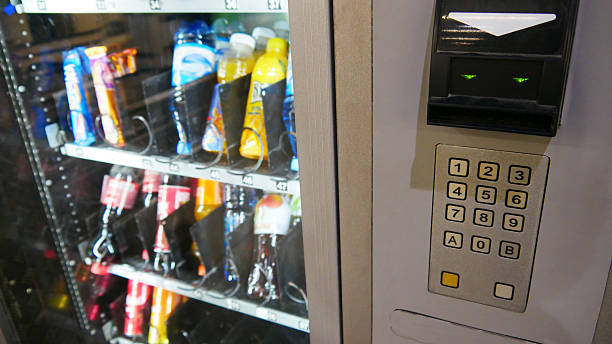Introduction
Lighting plays a central role in architecture and home design. While interiors often receive more attention, the exterior deserves equal focus. Among the many options available, exterior can lights stand out as a versatile, stylish, and functional solution. These fixtures provide subtle yet powerful illumination that enhances curb appeal, increases safety, and creates welcoming outdoor spaces.
This detailed guide explores every aspect of exterior can lights, from their history and design principles to installation, sustainability, and professional tips. Whether you are a homeowner, architect, or DIY enthusiast, you’ll find valuable insights here.
What Are Exterior Can Lights?
Exterior can lights, also known as recessed outdoor lights, are fixtures installed into ceilings, soffits, or overhangs. Unlike traditional hanging lamps, they sit flush with the surface, providing a streamlined look.
Key Features
- Recessed Design – Hidden housing keeps the focus on illumination, not the fixture.
- Directional Lighting – Can be angled to highlight walls, pathways, or landscaping.
- Durable Materials – Built for weather resistance and long-lasting performance.
- Versatility – Suitable for patios, porches, driveways, and garden spaces.
Their minimalistic design ensures functionality without overwhelming architectural aesthetics.
Why Choose Exterior Can Lights?
1. Aesthetic Appeal
They blend seamlessly with modern and traditional architecture. By being discreet, they allow the home’s design to shine.
2. Enhanced Safety
Proper exterior lighting reduces the risk of accidents and deters intruders.
3. Energy Efficiency
With LED technology, exterior can lights consume far less power than traditional options.
4. Flexible Applications
From highlighting architectural details to illuminating pathways, they serve multiple purposes.
5. Increased Property Value
Stylish and efficient lighting adds to curb appeal, making homes more attractive to buyers.
Types of Exterior Can Lights
Fixed Can Lights
These provide downward illumination and are ideal for general outdoor lighting.
Adjustable Can Lights
With pivoting mechanisms, these can highlight architectural features or landscaping.
Wet-Rated Can Lights
Designed to withstand direct exposure to rain and snow, perfect for open areas.
Damp-Rated Can Lights
Suitable for covered patios or porches where moisture exposure is minimal.
LED Exterior Can Lights
Highly energy-efficient with long lifespans, available in warm or cool tones.
Placement Ideas for Exterior Can Lights
Entryways
Illuminate the front door to create a welcoming entrance.
Patios and Decks
Install evenly spaced lights to make outdoor gatherings enjoyable after sunset.
Pathways and Driveways
Guide visitors safely while improving overall curb appeal.
Landscaping
Highlight trees, fountains, or garden features with adjustable can lights.
Roof Overhangs
Provide soft downward lighting that enhances the home’s façade.
Design Principles of Exterior Can Lights
Balance
Lighting should enhance the home’s symmetry rather than overpower it.
Layering
Combine ambient, task, and accent lighting for a complete effect.
Warmth
Choose color temperatures that create comfort instead of harsh brightness.
Directionality
Angle lights strategically to highlight textures and focal points.
Minimalism
Less is often more. Subtle lighting brings sophistication.
Materials and Finishes
- Aluminum – Lightweight, rust-resistant, and affordable.
- Stainless Steel – Durable, modern look, ideal for contemporary homes.
- Copper – Offers a warm, timeless patina that ages beautifully.
- Powder-Coated Finishes – Provide extra weather resistance and customization.
Selecting the right finish ensures durability and complements the home’s exterior design.
Energy Efficiency and Smart Lighting
LED Technology
LED exterior can lights reduce energy bills and last for thousands of hours.
Solar Options
Solar-powered recessed lights add eco-friendly illumination without wiring.
Smart Integration
Smart systems allow you to control exterior lights remotely, set schedules, or connect them to motion sensors.
With these upgrades, style and sustainability coexist seamlessly.
Installation Guide
Step 1: Plan Layout
Mark areas where lighting will improve safety and aesthetics.
Step 2: Choose the Right Housing
Wet-rated or damp-rated housings are crucial for outdoor durability.
Step 3: Wiring
Run appropriate outdoor electrical wiring with waterproof connectors.
Step 4: Cut Openings
Drill holes carefully in soffits or ceilings where fixtures will be recessed.
Step 5: Secure Fixtures
Insert housings, connect wiring, and install trim pieces.
Step 6: Test and Adjust
Check alignment, brightness, and angle before finalizing installation.
Safety Considerations
- Always turn off power before installation.
- Use weatherproof housing and gaskets.
- Hire a licensed electrician if unsure about wiring.
- Avoid overcrowding circuits.
- Ensure compliance with local building codes.
These precautions prevent hazards and extend fixture life.
Common Mistakes to Avoid
- Choosing indoor-rated lights for exterior use.
- Installing too many fixtures, causing glare.
- Using bulbs with mismatched color temperatures.
- Ignoring spacing guidelines, leading to uneven illumination.
- Overlooking maintenance, which shortens lifespan.
By avoiding these mistakes, exterior can lights remain effective and stylish.
Maintenance Tips
- Regular Cleaning – Remove dirt, cobwebs, and debris from trims.
- Check Seals – Ensure waterproof seals remain intact.
- Replace Bulbs Promptly – Avoid uneven lighting from dead bulbs.
- Inspect Wiring – Look for wear and tear, especially after storms.
- Upgrade When Needed – Replace outdated halogen bulbs with energy-efficient LEDs.
Cost of Exterior Can Lights
Factors Affecting Price
- Fixture quality and finish
- LED vs. halogen vs. solar
- Professional vs. DIY installation
- Number of lights required
- Smart integration features
Average Price Range
- Basic Fixtures – $20–$50 each
- Premium Finishes – $80–$200 each
- Smart or Solar Options – $100–$250 each
Although initial investment may seem high, long-term savings make them cost-effective.
Future Trends in Exterior Can Lighting
- Smart Homes – Integration with voice assistants and AI.
- Sustainability – Rise in solar-powered and recyclable materials.
- Customizable Designs – Adjustable trims and finishes for personalization.
- Architectural Integration – Fixtures blending seamlessly into modern facades.
These innovations promise greater efficiency and elegance in outdoor design.
Frequently Asked Questions (FAQs)
1. What are exterior can lights used for?
They provide outdoor illumination for safety, security, and aesthetics.
2. Are exterior can lights weatherproof?
Yes, but you must choose wet-rated or damp-rated models depending on placement.
3. Can I install exterior can lights myself?
DIY is possible, but hiring a professional ensures safety and compliance.
4. What is the difference between wet-rated and damp-rated lights?
Wet-rated lights withstand direct water exposure, while damp-rated are suitable for covered areas.
5. Do exterior can lights use a lot of electricity?
Not with LEDs. Modern options consume minimal energy compared to older halogen bulbs.
6. How far apart should exterior can lights be installed?
Generally, 4–6 feet apart for balanced illumination.
7. Can exterior can lights be dimmable?
Yes, many LED options work with compatible dimmer switches.
8. How long do exterior can lights last?
LED fixtures often last 25,000–50,000 hours, reducing replacement needs.
9. Do they increase home value?
Yes, they improve curb appeal and make properties more attractive to buyers.
10. Are there solar-powered exterior can lights?
Yes, solar options are eco-friendly and ideal for spaces without wiring.

